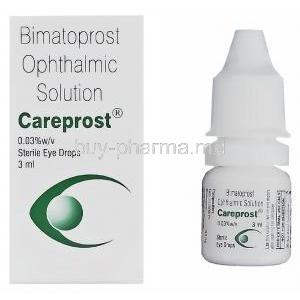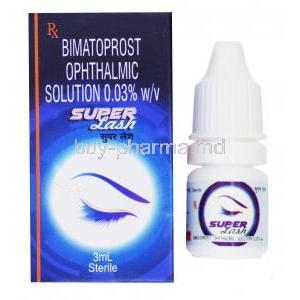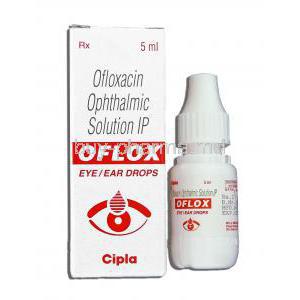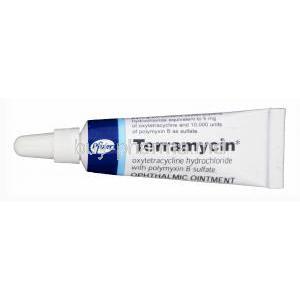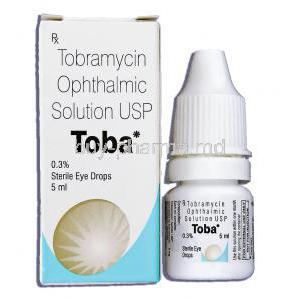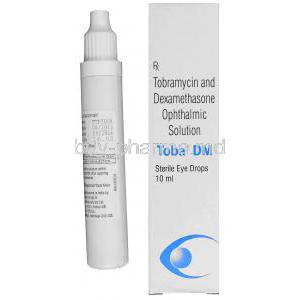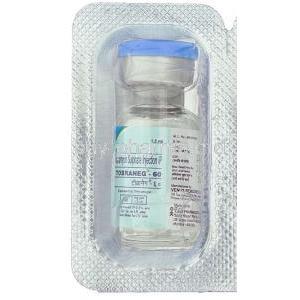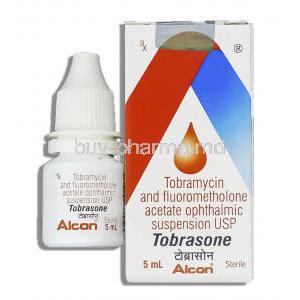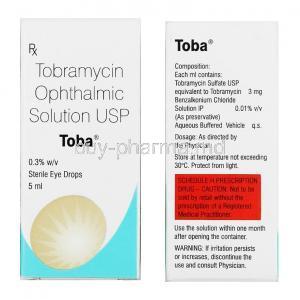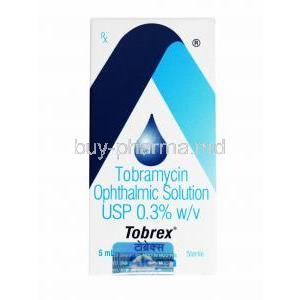Xalacom Eye Drop
- I. Introduction
- II. Composition
- III. Uses
- IV. Off-Label Use
- V. How It Works
- VI. Dosage and Administration
- VII. Storage
- VIII. Interaction
- IX. Warning
- X. Contraindication
- XI. Side Effects
- XII. Common Side Effects
- XIII. Careful Administration
- XIV. Important Precautions
- XV. Administration to Elderly
- XVI. Administration to Pregnant Women and Nursing Mothers
- XVII. Administration to Children
- XVIII. Overdosage
- XIX. Handling Precautions
I. Introduction
Xalacom Eye Drop is a breakthrough in treating eye conditions like glaucoma and ocular hypertension. It contains a combination of two ingredients, latanoprost, and timolol, that work together to lower intraocular pressure.
Managing eye conditions effectively not only helps maintain eyesight but also prevents the progression to more serious vision problems or blindness.
Early intervention is crucial in ophthalmology to keep eyes healthy and functioning well. The development of Xalacom represents an advancement in eye treatments aiming for better efficacy with fewer side effects and providing a strong treatment option for patients.
II. Composition
The main components of Xalacom Eye Drop are latanoprost, a prostaglandin analog, and timolol, a beta blocker. These ingredients work in ways to effectively reduce intraocular pressure and promote eye health. Latanoprost helps increase the outflow of humor, while timolol helps decrease its production.
By combining these actions, Xalacom effectively maintains intraocular pressure levels, which are crucial for good eye health. When compared to single-component treatments, the Xalacom dual therapy approach has shown superior effectiveness in lowering eye pressure, making it a preferred choice among both healthcare providers and patients.

III. Uses
-
- Xalacom (latanoprost + timolol) eye drops are primarily used to manage:
- Glaucoma: It helps reduce elevated intraocular pressure (IOP) in patients with open-angle glaucoma or ocular hypertension who are insufficiently responsive to other topical IOP-lowering agents.
- Ocular Hypertension: By reducing pressure inside the eye, Xalacom helps decrease the risk of optic nerve damage and vision loss associated with these conditions1.
- Xalacom combines latanoprost (a prostaglandin analog) and timolol (a beta-adrenergic receptor blocker). Regular use of Xalacom can help stabilize and enhance outcomes for patients, leading to improved quality of life and prolonged visual health1.
- Xalacom (latanoprost + timolol) eye drops are primarily used to manage:
IV. Off-Label Use
-
Investigation of Xalacom for Alternative Applications:
- Xalacom (latanoprost + timolol) has been investigated beyond its approved uses. Research indicates its effectiveness in treating a wider range of eye conditions.
-
Benefits of Xalacom in Pediatric Glaucoma and Neovascular Glaucoma:
- Several studies have highlighted how Xalacom could be beneficial in managing:
-
Professional Perspectives on Xalacom’s Unapproved Uses:
- Eye specialists often support the use of Xalacom for unapproved purposes, noting its favorable efficacy and safety profile for specific patient groups.
V. How It Works
Xalacom works in two ways to lower eye pressure: it helps fluid flow out of the eye and reduces its production, effectively decreasing intraocular pressure. The combination of latanoprost and timolol in Xalacom enhances its effectiveness in managing eye pressure, making it a strong treatment for glaucoma. Knowing how Xalacom works pharmacologically is important for improving treatment plans and achieving patient outcomes.

VI. Dosage and Administration
Dosage recommendations for conditions: The usual dosing schedule for Xalacom involves applying one drop to the affected eye(s) once daily in the evening, customized to meet individual patient requirements and reactions.
A step-by-step instruction manual on how to use Xalacom Eye Drops. It is crucial to follow administration methods to ensure hand cleanliness and prevent contamination of the dropper tip to ensure effectiveness and safety.
Modifying the dosage according to response and severity of the condition: Regular evaluation of intraocular pressure and eye condition is necessary for adjusting the dosage to achieve optimal management.
VII. Storage
The ideal storage conditions for Xalacom include keeping it away from light and moisture in a dry location to maintain its pharmacological effectiveness. It's important for patients to be mindful of the shelf life and expiration date of the medication to guarantee its efficacy and safety. Following handling tips and storage techniques is crucial to uphold the effectiveness and safety of Xalacom Eye Drops.
VIII. Interaction
- Drug interactions: Medications and substances that should not be taken together. Patients need to let their healthcare provider know about all the medications they are using to prevent any reactions with Xalacom.
- Xalacom and absorption into the body: Things to be mindful of. Even though only a small amount is absorbed into the body, it's important to be aware of any effects on the whole system for thorough care.
- Interactions with food and drinks, if there are any; While there haven't been any reports of interactions with food and drinks, patients should talk to their healthcare provider if they have any concerns.
IX. Warning
. Precautions related to Xalacom: Although Xalacom Eye Drops offer benefits for treating eye conditions, there are potential risks and precautions to consider. It is important for patients with a history of ailments like asthma or heart problems to be cautious.
- Special care should be taken when administering the drops to individuals who have had reactions to any of the ingredients in the past.
- Discussing all possible risks with healthcare providers is crucial to guarantee the safety and success of the treatment.
X. Contraindication
Here are some reasons why Xalacom should not be used. If a patient has reactive airway disease or a history of cardiac failure, using Xalacom can cause harmful reactions that outweigh the benefits. It's important to check the patient's medical history for any allergies to beta-blockers or prostaglandin analogs before prescribing Xalacom. Reviewing the history thoroughly is crucial for healthcare providers to make well-informed decisions about prescribing Xalacom.
XI. Side Effects
Analysis of uncommon side effects: Although Xalacom proves to be efficient in lowering intraocular pressure, it can lead to various side effects, starting from slight conjunctival redness to more severe outcomes like alterations in iris pigmentation.
Both patients and healthcare professionals must distinguish between severe side effects to manage these potential adverse reactions effectively.
Dealing with side effects involves providing relief for symptoms. If needed, seek medical assistance, particularly if the side effects persist or worsen.
XII. Common Side Effects
The side effects that are commonly mentioned are eye irritation, alterations in eyelash growth, and dry eyes. Being able to identify these responses can assist individuals and healthcare professionals in effectively addressing them.
- To manage these side effects at home, recommendations include utilizing artificial tears for dryness and refraining from using contact lenses if irritation arises.
- When common side effects indicate a need for intervention, seeking advice from a healthcare professional is essential, especially if symptoms persist or significantly impact daily activities.

XIII. Careful Administration
Tips for administering Xalacom highlight the significance of the correct dosage and application method to decrease overall absorption and lower the chance of adverse reactions. Tailored considerations for patient groups guarantee that individual requirements are catered to whether dealing with older adults, pregnant women, nursing mothers, or children. Suggestions for monitoring and follow-up care may involve checks of intraocular pressure and eye examinations to evaluate treatment effectiveness and make any required adjustments.
XIV. Important Precautions
Prior to starting therapy, it is crucial to conduct treatment evaluations and provide counseling to patients. This helps prepare them for the treatment, address any worries they may have, and set goals for the expected outcomes.
Ensuring safety and minimizing risks involves following the prescribed dosage and schedule diligently, as well as promptly informing healthcare professionals about any negative reactions.
Additionally, lifestyle adjustments and dietary advice can enhance the effectiveness of the treatment. Promote the patient's overall health.
XV. Administration to Elderly
- Changes in the dosage and how the medication is given might be needed for individuals who are more sensitive to the impacts of Xalacom.
- Keeping an eye on and potentially adjusting the treatment plan is important for reducing side effects in patients.
- Regular monitoring and assessments are key to making sure that the treatment continues to work and is safe for older adults.
XVI. Administration to Pregnant Women and Nursing Mothers
- Safety considerations for using Xalacom during pregnancy and breastfeeding are crucial. It's essential to balance the risks to the baby with the advantages for the mother.
- Research findings and FDA recommendations can offer insights on how to approach Xalacom usage in these situations, where exploring treatment options and evaluating risks versus benefits play a significant role in making informed decisions.
XVII. Administration to Children
- When it comes to using medications for children, it's crucial to take into account their age needs.
- Pediatric ophthalmologists rely on a combination of experience and expert judgment to determine the right dosages and safety precautions for young patients.
- While there may be research on the use of Xalacom in kids compared to adults, there is evidence to suggest that it can be a viable treatment option in specific situations.

XVIII. Overdosage
Signs and symptoms of an overdose of Xalacom may consist of feelings of nausea, dizziness, breathing issues, or a slow heart rate. It is crucial to identify these signs for timely and efficient treatment. The initial. Treatment plans for an overdose focus on providing symptomatic and supportive care with a special emphasis on offering respiratory and cardiovascular support if necessary.
Preventive measures and educating patients about the risks linked to overdosing and the significance of following prescribed doses are components of safe treatment.
XIX. Handling Precautions
To ensure the Xalacom Eye Drops remain safe and effective, it's important to keep the dropper tip clean and store the medication correctly to prevent contamination and deterioration. Maintaining hand hygiene and avoiding direct contact between the dropper and the eye are essential steps in reducing the risk of infection. Teaching patients how to handle the medication safely is a part of their care making sure they know how to use it properly.


